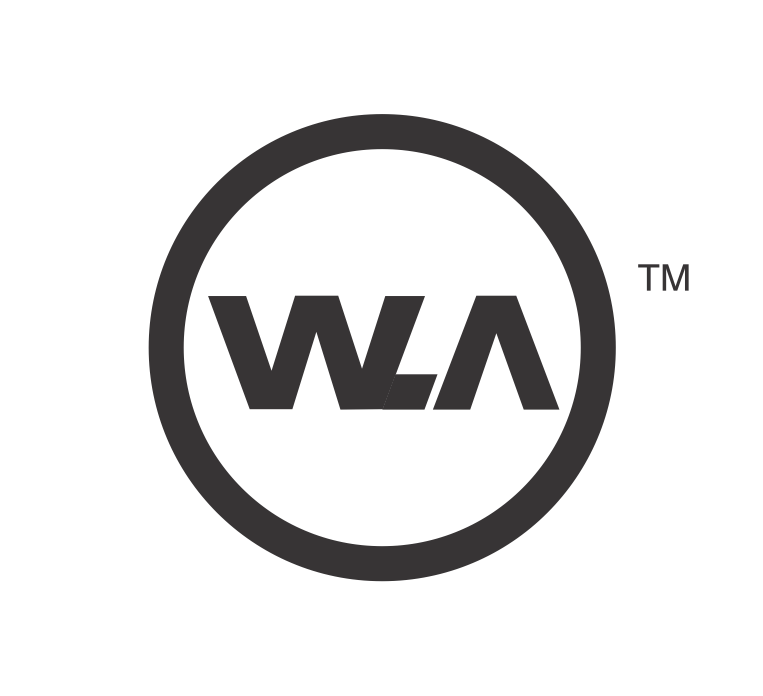- BACKGROUND
Innovative methods like Special Purpose Acquisition Companies (SPACs) for raising of capital have been around for decades. Since the 1990s, SPACs have existed in the technology, healthcare, logistics, media, retail and telecommunications industries. However, in the recent years, they have become more popular by attracting big names and raising big money through initial public offering (IPO). In 2020, while the world was experiencing a pandemic, a global surge of SPACs has also been noticed in the financial markets, especially in the United States.
- INTRODUCTION – HOW SPAC WORKS
- SPAC is a publicly traded company that comes into existence with the sole purpose of raising funds from the public through an IPO to eventually acquire or merge with a target company to support the target company for their public listing and raising capital without going through the conventional IPO process. SPACs are also called ‘blank cheque company’ or ‘shell company’ as they themselves do not have any assets, business, or operations other than acquiring a target company and is managed by an established management team (with skills in a certain segment or sector) or by a sponsor. SPACs, being listed on a stock exchange, act as an investment vehicle for another (target) company. It is for this reason, SPACs are also considered as ‘reverse-IPO’ because instead of going for the lengthy and traditional process of public listing, the target company become publicly traded through the acquisition by a SPAC which is already a listed entity. The U.S. Securities and Exchange Commission (SEC) observed that, “A SPAC is created specifically to pool funds in order to finance a merger or acquisition opportunity within a set timeframe”.
- Although, a trend of SPACs funding is seen in major financial markets now, however, the origin of SPACs is traced back to the 1990s in the US, primarily, in the technology, healthcare, media, logistics, telecommunications, and retail industries. Initially, SPACs faced several challenges, even in the US, due to lack of regulatory framework and risk of them being potentially fraudulent transactions. However, with reformative measures, SPAC “Blank Check Company”. SEC.gov. U.S. Securities and Exchange Commission. Retrieved 10 April 2021. regulations have gone through an evolution in past decades making them an attractive option for growing companies as well as for private startups. For instance, in 2015, Videocon d2h was listed on the NASDAQ with the help of a blank-cheque vehicle Silver Eagle Acquisition Corp., similarly, in 2016, Yatra was listed on NASDAQ after a reverse merger with a US-based SPAC Terrapin 3 Acquisition Crop2 . Recently, Virgin Galactic, a company owned by Richard Branson sought public funding through the SPAC model rather than opting for traditional and conventional IPOs.3
- SPACs MECHANISM IN THE US
- The SPAC is generally formed by business experts or experienced entrepreneurs (Sponsors). After incorporating the SPAC, they raise capital through the process of IPO by registering with the SEC, filling prospectuses, and conducting a road show. Since, during the IPO process, SPAC do not have any business or operation, they raise capital solely by relying on the reputation and experience of the Sponsors. In this way, SPAC lists itself at the SEC.
- The funds raised by SPAC are, then, placed in an interest-bearing escrow account until used for a merger or acquisition of a private company. As general practice, the time frame for acquiring or merging with a target company is a period of two years. After conducting due diligence on the target company and finalizing necessary documentation, the SPAC submits a statement disclosing all details pertaining to the proposed business combination with SEC. Then, after getting an approval from shareholders to release the funds from escrow account as well as getting an approval from SEC on statement, SPAC and the target company, enter into a definitive acquisition or combination agreement to combine themselves into a publicly-traded company.
- This transaction of combining SPAC with their target company is known as the “De-SPAC” transaction. Pursuant to combination of the companies, sponsors of SPACs, in exchange of investing capital in the target company, will get share/stake in the target company. If SPAC fails to acquire or merge with another company within the required time, then the proceeds from IPO are returned to the investors by liquidating the escrow account. In this way, without going through the traditional and lengthy process of IPO, private companies become publicly listed. SPAC’s route of generating capital seems quite attractive option for private companies as it provides easier access to capital and listing with SEC without affecting the managerial control of the company, that too through a less time-consuming process.
- SPACs MECHANISM IN INDIA
- SPAC transactions and acquisitions thereof are not new to India. Basis on reported information, several transactions including listing of Videocon d2h and Yatra Online Inc on the NASDAQ; Trans-India Acquisition Crop’s acquisition of Solar Semiconductor in 2008; Phoenix India Acquisition Corp. listing on the NASDAQ took place in India by following the SPAC route. Recently, ReNew Power opted for SPAC structure by combining with RMG Acquisition Corporation II, a US-based SPAC, for listing itself on NASDAQ. Also, grocery seller Grofers, and Flipkart are also exploring SPAC options for NASDAQ listing4 . With ever rising globalization rate, Indian businesses and startups find public listing in overseas capital market a most sought-out but difficult option. By following SPACs framework, public listing in India or in foreign jurisdiction can become easier. However, one has to comply with the current regulatory requirements in India to enter into such transaction.
- Existing Regulatory Framework for SPACs in India
A De-SPAC transaction requires a combination of the SPAC with a target company, which involves the execution of merger or acquisition in compliance with laws of India. Currently India does not have a definitive legal & regulatory framework governing the SPAC structure/transactions end-to-end. Basis on our understanding, following factors must be reckoned with while entering into SPAC transaction in India: - The Companies Act, 2013:
-
- Section 248 of the Companies Act 2013, which authorizes the registrar to remove the company’s name from the register of companies if it fails to commence business within one year of its incorporation. While for SPAC, the acquisition timeline for locating a target company is two years. This clause may result in the removal of SPAC from the register of companies even before locating its target company.
-
- SEBI Regulations:
-
- Section 6 of SEBI (Issue of Capital and Disclosure Requirements) Regulations, 2018, provides that, a company must have net tangible assets of at least 3 crore rupees in each of the preceding three years; minimum average pre-tax operating profits of 15 crore rupees during any three of the last five years, and net worth of at least one crore in three preceding years for being eligible for IPO.
- Besides, the National Stock Exchange (NSE) and Bombay Stock Exchange (BSE) require companies to have certain positive operational cash accruals in the last two years. The SPAC, being shell company, formed for accessing investment within a lesser period, may have a potential to make it ineligible for public listing.
-
- FEMA Regulations:
-
- The guidelines of Foreign Exchange Management (Cross Border Merger) Regulation 2018 read with Section 234 of the Companies Act 2013 require prior approval from National Company Law Tribunal for an outbound merger. Moreover, such transactions need to be approved by the Reserve Bank of India (RBI) to meet the condition that the fair market value of share must be within the prescribed limits of Liberalized Remittance Scheme.
- Along with these requirements, compliance with overseas direct investment regulations for residents not being individuals, compliance with the RBI’s branch office regulations, Foreign Exchange Management (Transfer or issue of any Foreign Security) Regulations, 2004 are also required. Thus, in India, the regulatory framework is not so inclusive to cover SPAC structure within its ambit which makes the establishment of SPACs challenging. However, legislators are considering SPAC as an option for making listing of Indian companies in foreign stock exchanges easier. Recently, SEBI has formed an expert group under Primary Market Advisory Committee to examine the SPAC structure and potential benefits for Indian entities.
- PROPOSED REGULATORY FRAMEWORK FOR SPACS IN INDIA
- International Financial Services Center Authority (IFSCA) has released a consultation paper on Proposed International Financial Services Centers Authority (Issuance and Listing of Securities) Regulations, 20216 (Consultation Paper), which includes a framework for listing shares by a SPAC in the International Financial Service Centre (IFSC) based in India as well as in foreign jurisdiction. The Consultation Paper recognizes SPAC mechanism as an innovative method for raising capital and proposed to create a framework for listing of SPAC on the stock exchanges recognized by IFSC, to raise capital for undertaking an acquisition of a company or assets.
- The Consultation Paper provides the following framework:
- Primary Objective: A SPAC shall be eligible to raise capital through IPO on recognized stock exchanges, only if, its primary objective is to merge or amalgam or acquire shares or assets of a company having business operations.
- Offer Timing: The IPO shall be made within a period of not more than one year from the date of issuance of observations by IFSCA.
- Initial Disclosures in Offer Document: It provides that material disclosures in the offer document to enable the applicants to make informed investment decision. The offer document must contain disclosures relating to public offer, including, Offer Document Summary, risk factors, introduction, general information, capital structure, particulars of the issue, particulars about the issuer, financial statements, related party transactions, legal information, etc.
- Issue Size: The issue shall be of size not less than USD 50 million or any other amount as may be specified by IFSCA. It also provides that the sponsors shall hold at least 20% of the post issue paid up capital.
- Offer Period: The IPO shall be kept open for at least three working days and not more than ten working days.
- Minimum Subscription: The minimum subscription in the issue shall be at least 75% (seventy-five percent) of the offer size.
- Application Size: The minimum application size in an IPO of shall be USD 2,50,000. It also provides that no single application shall be allotted more than 20% of the post issue capital.
- Listing: The listing of SPAC shall be done within the period prescribed by the stock exchanges.
- Obligations of SPACs:
- The SPAC issuer is required to keep at least 90% of the proceeds from the IPO in an interest-bearing escrow account until SPAC’s business acquisition takes place.
- The escrow funds shall be invested only in instruments disclosed in the offer document.
- The SPAC is required to seek approval from a majority of shareholder other than sponsor(s) is required before entering into business acquisition. If a shareholder votes against a proposed acquisition, he shall have the right to convert its securities into a pro rata portion.
- Timeline for SPACs Transaction: the SPAC issuer is expected to complete the business acquisition within 36 months of the date of its listing on the recognized stock exchanges. If acquisition is not completed within the abovementioned period, then it may be extended up to another 12 months. For such extension, an approval from 75% or more shareholders shall be taken, and those who does not approve for the extension would have the right to convert its securities. In case, the SPAC extension is not approved by the required majority of the shareholders then the SPAC shall be liquidated and delisted from the recognized stock exchanges.
- Transfer of Securities: SPAC sponsor cannot transfer securities without prior completion of the business acquisition.
- Fair Market Value: The business acquisition is required to have an aggregate fair market value equal to at least 80% of the aggregate amount deposited in the escrow account, excluding deferred underwriting commissions held in escrow and any taxed payable on the income earned on the escrowed funds.
- Post-acquisition Requirements: The SPAC completing the business acquisition will require to meet the listing eligibility criteria within 180 days to continue the listing on the recognized stock exchanges. The shareholding of the sponsor in the target company shall be locked up for a period of 180 days from the date of the business acquisition.
- DHWAJ & ASSOCIATES COMMENTS
- We appreciate and welcome the efforts of IFSCA to feel the need of identifying challenges which are detrimental to the development of SPACs in the country. Since SPACs are a different animal to deal with in comparison to the companies that undergo normal IPOs, thus the Government must develop a comprehensive and consistent regulatory framework based on global best practices with a special focus on enacting an all-encompassing framework. This framework must facilitate access to Indian companies to the world’s capital markets by way of adopting structures like SPACs but without making an addition to the list of money laundering vehicles.
- Further, we also support a view that with the right investment, SPAC can become an attractive option for startup and other Indian companies willing to get themselves listed abroad. Considering the current state of Indian economy, the Government should adopt business friendly structures such as SPACs to strengthen the business-friendly eco-system of the country.







